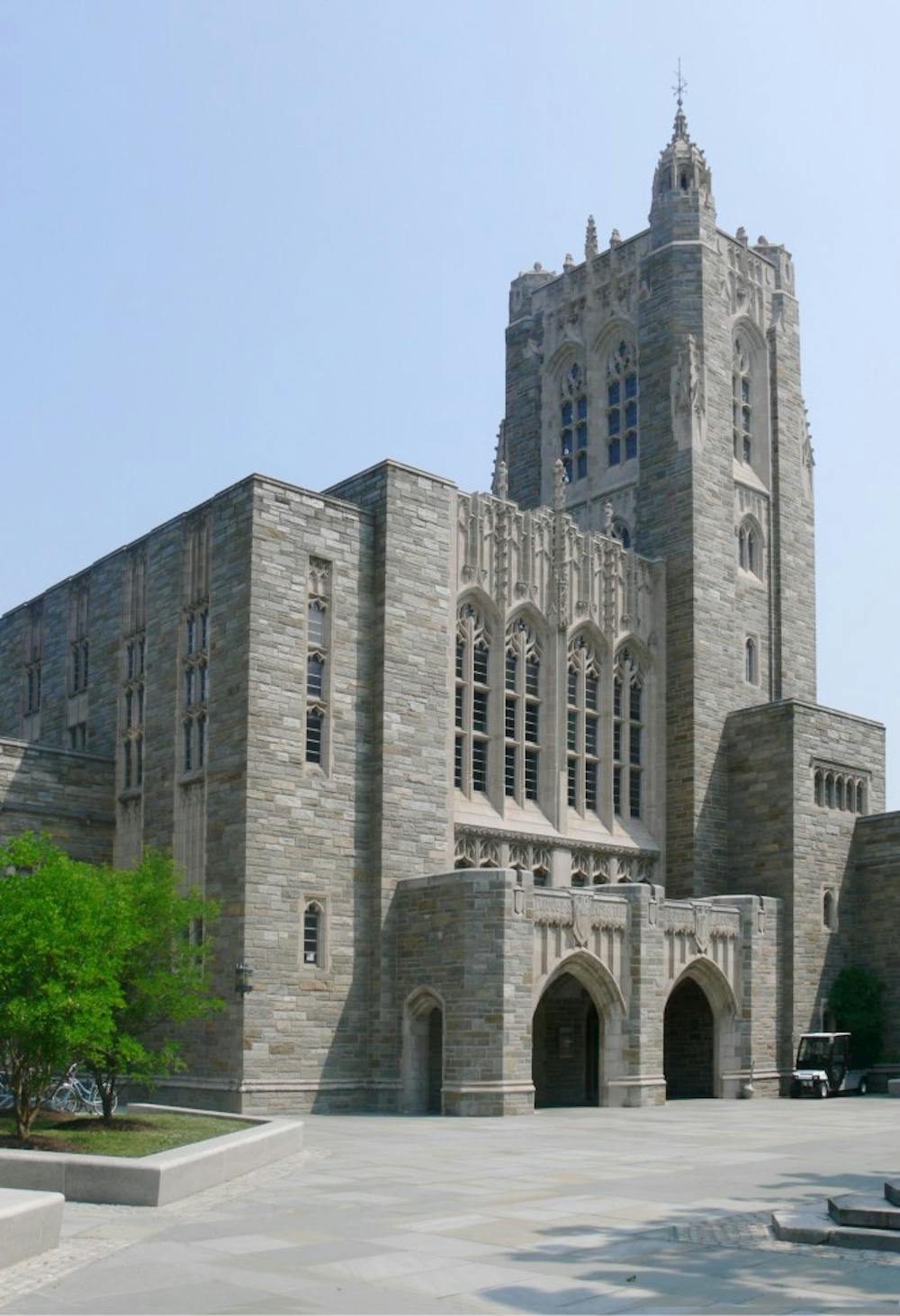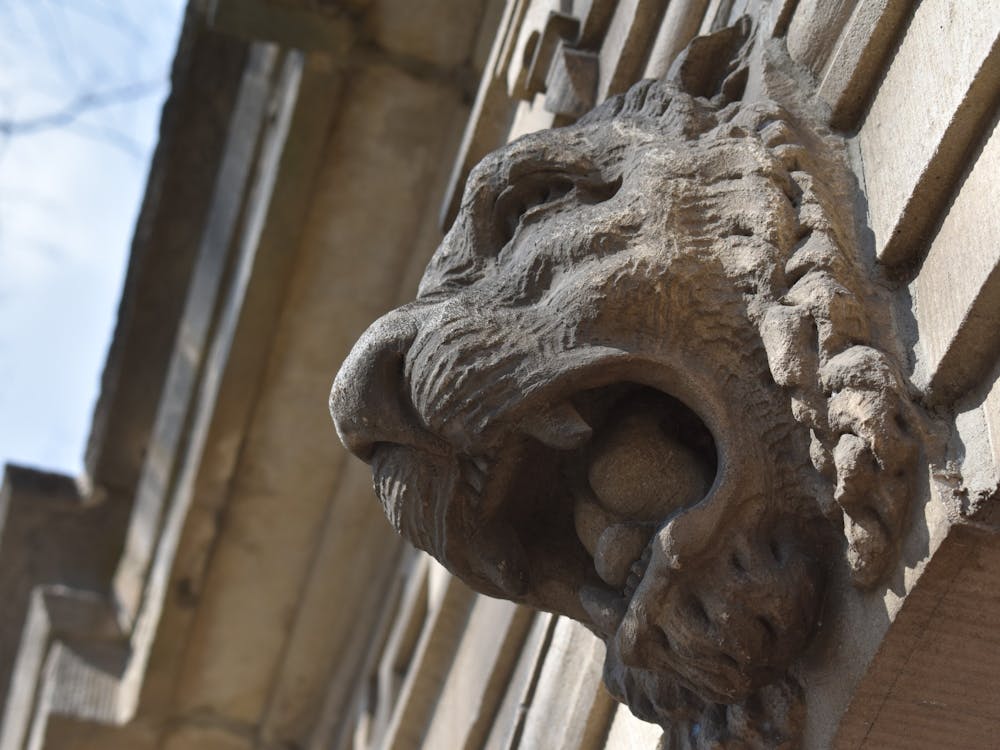In 1926, Harvey S. Firestone Sr., the millionaire founder of the Firestone Tire and Rubber Company, set his sights on an ambitious goal: to break the British and Dutch monopoly on the global rubber market. To do so, he needed his own rubber plantation, a necessarily vast operation to supply his U.S. tire factories.
Firestone saw great potential in the small west African nation of Liberia, blessed with millions of rubber trees. By exploiting regional instability, the State Department acquired an incredible deal for the famous U.S. entrepreneur. At six cents an acre, Firestone purchased a 99-year lease on one million acres, or 4 percent of Liberia by area. The world’s largest rubber plantation was born.
Today, perhaps nothing better embodies Princeton’s academic prowess than the Collegiate Gothic façade of the Harvey S. Firestone Memorial Library, embellished with granite gargoyles and delicate ornaments. For 70 years, “Firestone” has lived in the jargon of the Princetonian. The word connotes feverish nights spent cramming for exams, as well as our most serious intellectual moments. Yet, despite our affectionate remembrance of the library’s benefactor, we have largely forgotten his mixed legacy.
Allegations of human rights abuses have swirled around the Firestone plantation since its foundation, when soldiers forced workers to march to the site. In his research, Ibrahim Sundiata, a noted scholar of West African history, found that the Firestone Company often colluded with U.S. presidents to pursue imperialist foreign policy. With its national economy utterly dependent on Firestone, the Liberian government had no choice but to comply with the whims of the United States.
Little has changed in the past century. Perennial charges of child labor and coercion dog the site, as former New York Times journalist Howard French notes in “A Continent for the Taking.” Firestone retains near authoritarian control over its workers. They live from birth to death in Harbel, the plantation’s capital city, as many of their parents and grandparents did. Firestone runs Harbel’s only hospital, controls housing options, and provides utilities. Workers believe that pollution from the plantation taints their water supply. They recount having to “tap,” or collect latex, from hundreds of trees a day, or else face cuts in their already paltry incomes.
In 2006, the International Labor Rights Forum filed a class-action lawsuit alleging “conditions of slavery” at Harbel. Although a federal appeals court rejected the case because Firestone did not coerce children to work, no U.S. citizen would tolerate the working conditions at Harbel. Jorge Luis Borges famously remarked that he had “always imagined that Paradise will be a kind of library.” If our very own Firestone Library is an intellectual’s Eden, the Firestone plantation could be its own kind of hell.
As an institution, Princeton has not shied away from complicated facets of its history. Last month saw the culmination of the Princeton & Slavery Project, a multi-year endeavor through research and reckoning. Yet, despite the University’s rigorous efforts, the proverbial stone of Firestone remains unturned.
Correspondence from the tenure of former president Robert Goheen ’40 illuminates the intimate relationship that the University enjoyed with the Firestones, who contributed to many projects beyond Firestone Library. Goheen and his associates sent internal memoranda, now housed at the Mudd Library, describing cordial lunches at the Firestone headquarters in Akron. In September 1968, Ray Firestone hosted the University’s director of corporate relations, David Probst, for five days at Harbel, where, ironically, Probst suggested the Firestones finance a professorship in African studies. Goheen submitted a full-scale proposal for a Program in African Studies two years later. The Firestone contributions committee promptly rejected the idea.

To help finance the library and its subsequent expansion, the Firestones transferred common stock of the Firestone Tire and Rubber Company to the University. The University, therefore, came to own a stake in the company. Daniel Day, assistant vice president for communications, could not confirm whether the University still holds stock in Firestone (now publicly traded as Bridgestone), in accordance with University policy. Nonetheless, this fact should give us pause. Liberian labor not only enriched the Firestones, but also directly benefited our institution.
As we proceed, we should not take the Firestones out of their historical context. Harvey Firestone Sr. built Harbel before landmark workers’ rights legislation came into effect. He saw himself as a man of progress, declaring to a journalist that he was the first employer to introduce the U.S. working day to Africa. With that said, we also should not use “those were different times” as an excuse for overlooking the unpleasant underside of the Firestone plantation.
As a community, we may decide that there are better uses of our scholarly attention than to retroactively evaluate the Firestone Tire and Rubber Company. Or, we may find the company’s conduct inexcusable, no matter when. In either case, the University must first investigate its historical links to the company. We cannot reach an educated and equitable decision until we know more fully how our institution profited from the Firestone plantation.
As he laid the cornerstone for Firestone Library on June 16, 1947, former University president Harold Dodds proclaimed that the moment represented “the meaning of our past and the responsibilities of our future.” He was right. Our beloved library safeguards innumerable records of the past, allowing us, as scholars, to learn the lessons of history. If we are to keep with the library’s highest aim, we must come to know the whole of our past. The legacy of Harvey Firestone is no exception.

Jon Ort is a first-year from Highlands Ranch, Colo. He can be reached at jaort@princeton.edu.








